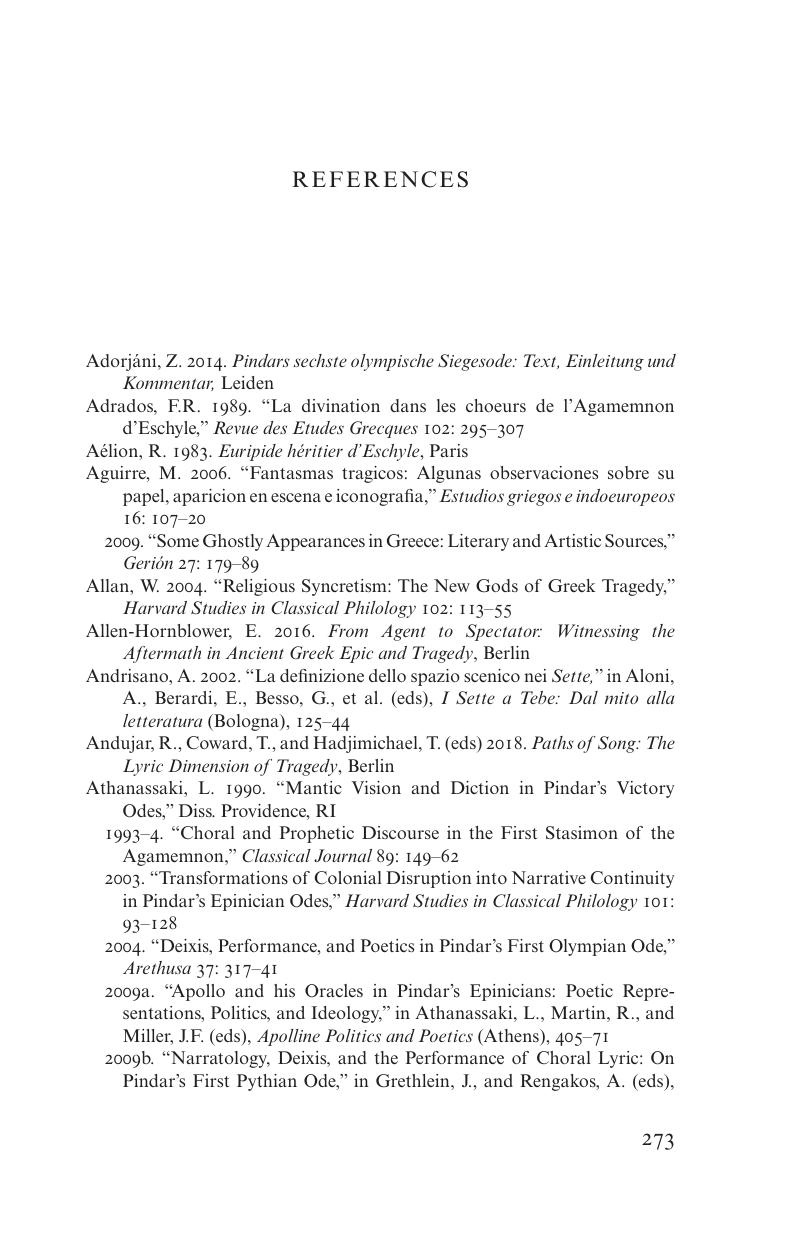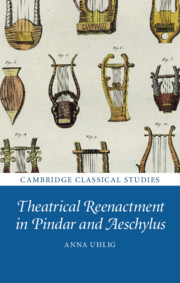Book contents
- Theatrical Reenactment in Pindar and Aeschylus
- Cambridge Classical Studies
- Theatrical Reenactment in Pindar and Aeschylus
- Copyright page
- Contents
- Acknowledgments
- Introduction
- Chapter 1 Voices of Others Embedded Speech in Pindar and Aeschylus
- Chapter 2 Anachronistic Harmonies Agamemnon parodos, Pythian 4
- Chapter 3 Vocal Tools Pythian 12, Olympian 13, Seven Against Thebes
- Chapter 4 Somatic Semblances Choephoroi, Olympian 8, Pythian 2
- Chapter 5 Locating the Revenant Pythian 8, Persians
- Conclusion
- References
- Index
- References
References
Published online by Cambridge University Press: 07 July 2019
- Theatrical Reenactment in Pindar and Aeschylus
- Cambridge Classical Studies
- Theatrical Reenactment in Pindar and Aeschylus
- Copyright page
- Contents
- Acknowledgments
- Introduction
- Chapter 1 Voices of Others Embedded Speech in Pindar and Aeschylus
- Chapter 2 Anachronistic Harmonies Agamemnon parodos, Pythian 4
- Chapter 3 Vocal Tools Pythian 12, Olympian 13, Seven Against Thebes
- Chapter 4 Somatic Semblances Choephoroi, Olympian 8, Pythian 2
- Chapter 5 Locating the Revenant Pythian 8, Persians
- Conclusion
- References
- Index
- References
Summary

- Type
- Chapter
- Information
- Theatrical Reenactment in Pindar and Aeschylus , pp. 273 - 298Publisher: Cambridge University PressPrint publication year: 2019



